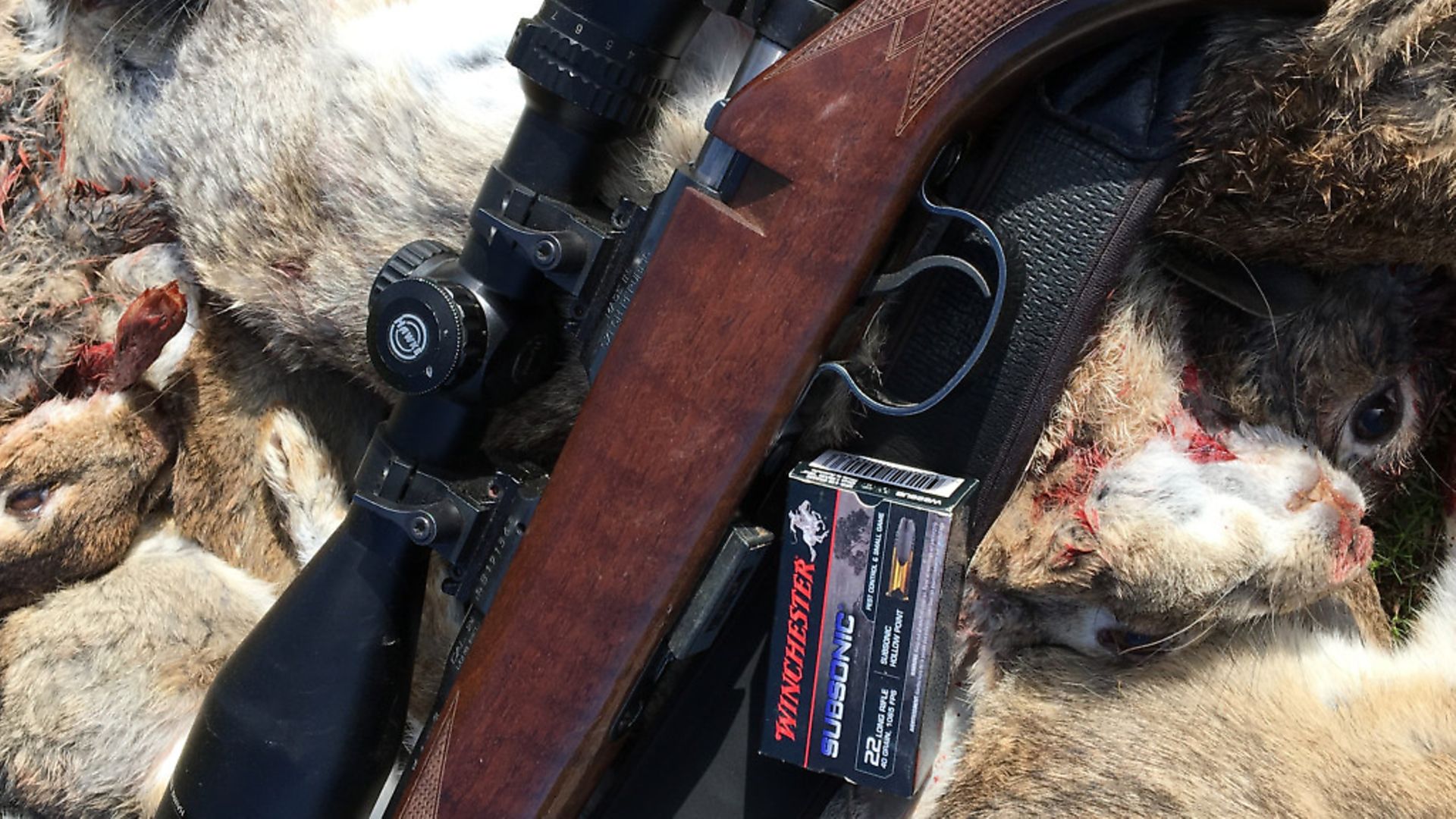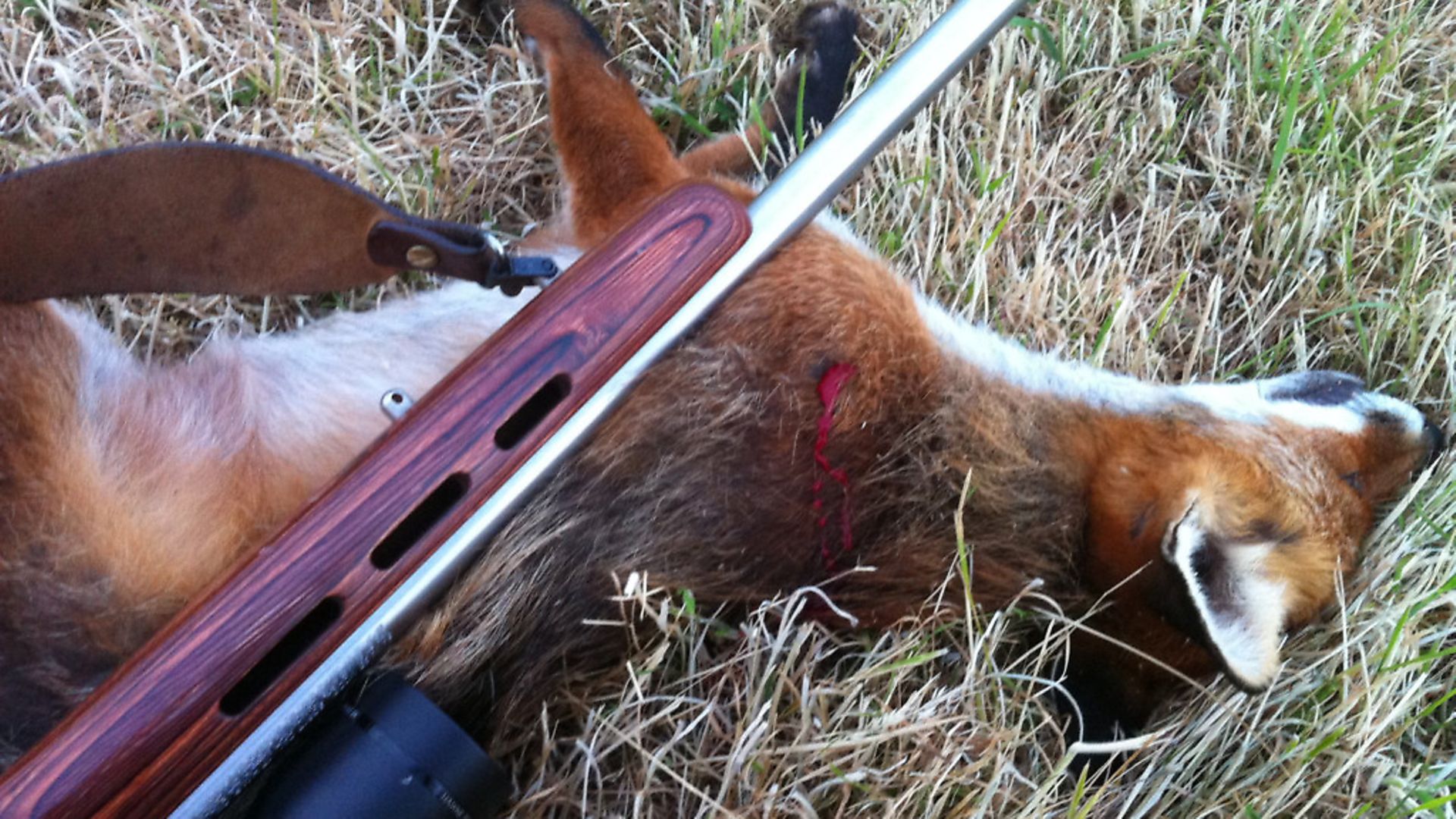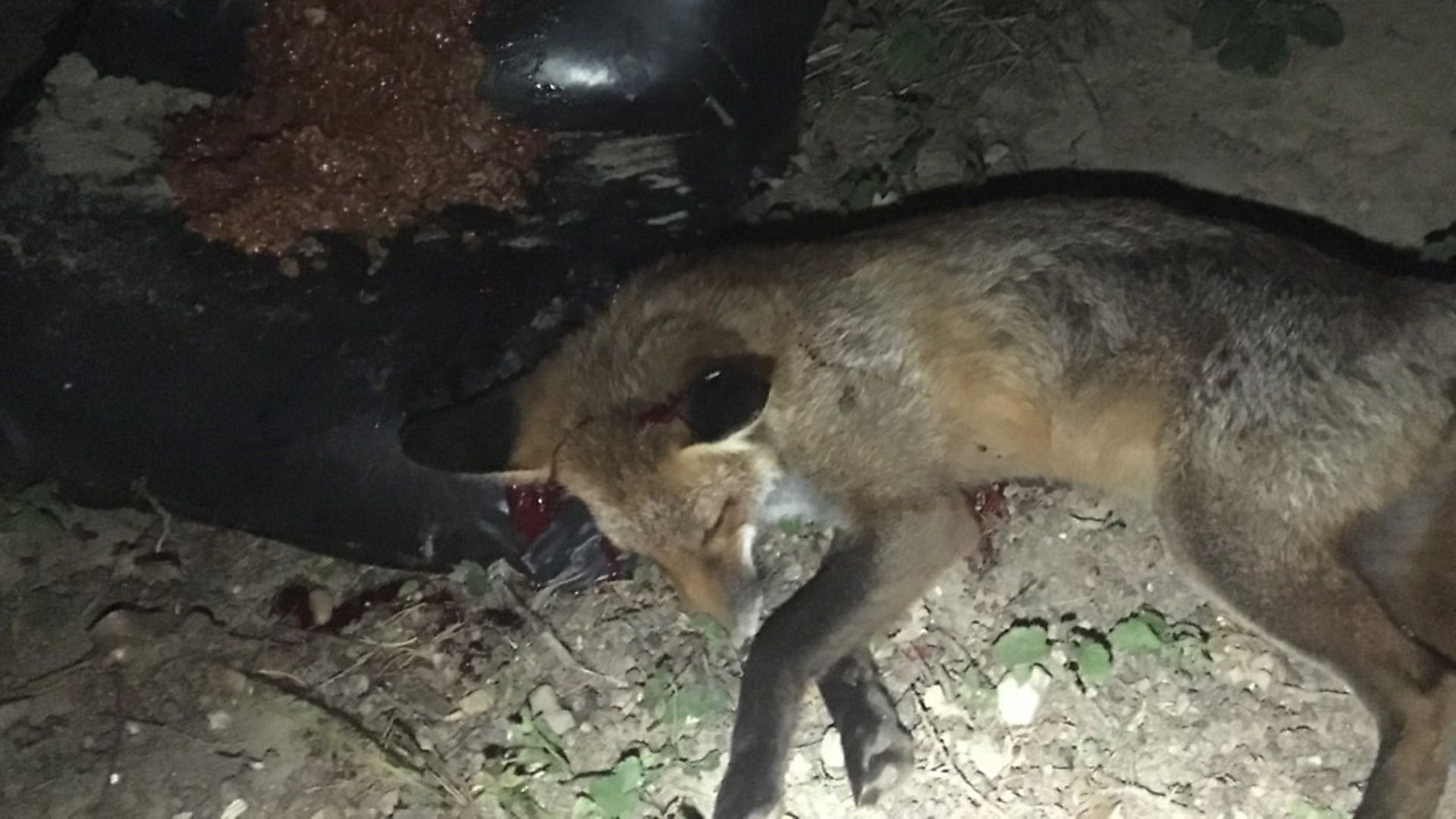Mark Ripley makes the case for rimfires as a specialist foxing round for situations when subtlety, safety and silence outweigh the need for pure stopping power
 credit: Archant
credit: Archant
Ever since the .17 HMR round became popular, there has been the debate as to which is better (at least for rabbiting) - the .17 HMR or the .22 LR. I'm often also asked what I think of both the HMR and .22 for foxing and the answer is it very much depends on the situation. I've used both on many occasions and had mixed experiences of both. Getting a result is all about being realistic with ranges and good shot placement.
Whenever possible, a centrefire for foxes is always the best choice, but sometimes the need arises to do the job discreetly or the location maybe unsafe for a high-powered centrefire rifle.
I've had to shoot foxes in urban gardens in the past and the humble .22 LR is the perfect tool as the range is usually around 30 yards and I need to be both quiet and discreet. Placing a shot between the eye and the ear of a fox gives an instant kill and does so with the minimum of noise using a moderated rifle and subsonic ammunition.
One downside to the .22 is its tendency to ricochet. Anyone who has ever owned a .22 will undoubtably be familiar with the cowboy film style 'whizz' of a tumbling bullet speeding off in an unknown direction.
Shooting foxes in an urban environment or anywhere where a ricochet could be a danger requires a good soft backstop to absorb the bullet once it has done its deed. I like to use a few bags of sand for this. I find plastic rubble sacks ideal and would usually half-fill one on top of which the bait would be placed, then fill two or three more to stack behind that - the idea being to take the shot as the fox takes the food.
It's wise to use very small bits of bait or dog food to stop the fox taking a large morsel off to eat away from the backstop.
 credit: Archant
credit: Archant
Swings & roundabouts
An advantage of the .17 HMR is that not only is it flatter shooting, giving better range, but because it uses a ballistic tip and the bullet is travelling extremely fast it is far less likely to ricochet, instead fragmenting dramatically on impact.
For rabbits, crows and other pests, the .17 HMR has a great advantage over the .22 in as much as it has a much flatter trajectory. When zeroed at 100 yards, it needs little adjustment at anything out to 150 yards, making it very forgiving and an ideal 'truck gun' for keeper and farmer alike.
It does, however, have a bit of a crack to it. For the most part, this won't make much difference, as the extra range generally makes up for the few closer pests that may be spooked by the shot - whereas the .22, with its subsonic ammunition, may well account for more closer range targets, despite its restricted range.
That said, if you know your distances and bullet drop, the .22 still has enough punch to reach out there or you could make use of high-velocity ammunition that can get it out to near HMR range with a little hold over. The .22 LR ammunition is also considerably cheaper than that of the .17 HMR, which is another plus.
So both have their advantages and disadvantages and it's very much a case of personal choice for general pest control, but what about purely for foxes? For discreet fox control in areas such as gardens, the .22 is the simple choice. It's near silent and will do the job with a well-placed shot. If noise isn't an issue, the .17 HMR is the better choice - especially if there's potential for ricochets.
 credit: Archant
credit: Archant
question of range
There are many stories of the legendary performance of the .17 HMR, with talk of foxes being taken at 300 yards and the such like, but in truth, although this may be achievable, the odds are you're just as likely to wound an animal at this sort of range.
I've shot a few out to around 170 yards and achieved clean kills, but with a little more experience with the HMR, I'm now more inclined to say 100 yards is a more sensible limit for foxing.
I remember once shooting a fox during the day that was sat in a gateway watching me at around 100 yards. Taking a quick shot, I aimed at the head but aimed dead centre. The fox collapsed on the spot without movement until I was about 20 yards away before jumping up and bolting into a ditch full of reeds.
I could here the poor thing struggling to breathe and thrashing about in the reeds. The gateway where the fox had been sat bridged the ditch for vehicles to pass, so thinking quickly I got the other side of the fox and threw a dead branch into the reeds.
The fox began to crash through the reeds away from the noise and back toward the gateway to escape the ditch. I was then able to rush in front of it to the gateway, to be in position as the fox broke cover and rushed past me.
I swung the rifle like a shotgun aiming down the side of it and at about 12 yards bowled it over dead with a single lucky shot through its chest. On inspecting the fox, the first shot had hit it square on the bridge of the nose fragmenting instantly and failing to penetrate far enough to hit the brain or spine to give a clean kill.
When head shooting foxes with a rimfire, you ideally need to hit between the eyes or eye and ear for an instant kill. Chest shooting can also be effective when side-on, although front-on, the sternum and rib structure is stronger so you run a higher risk of the round breaking up before reaching the vitals.
I once shot a big vixen that had been hit in the back end with a centrefire and gone to cover. As we approached the cover from either side, she came out my side above the cover and out of sight of my mate armed with his .223. I was designated rabbit shooter that night so had the HMR.
Dropping onto the bipod, and using a lamp, I managed to get a clear shot at the fox as it crossed from left to right on the bank. I could see it was a long shot so held high and ahead of the fox as it was going at a steady trot, despite its injuries. I fired and lost sight of the fox, but heard an impact. Walking up the steep bank, I was amazed to find that I'd pulled off a clean kill with a side-on chest shot at an even more surprising 170 yards! I certainly don't think I could do that again easily!
The .17 HMR has reached a level of popularity in America with the foxers who are hunting them for their pelts, as the tiny bullet does so little damage to the skins.
One of the failings of the HMR has been in the manufacture of its ammunition with misfires and split cases and more worryingly improper discharges where the bullet leaves the case but without the required energy to leave the barrel.
The shooter who fails to notice the dull report assumes a miss and chambers another round. Firing the second with the barrel already blocked with a previously lodged bullet could result in an explosive outcome and injury to both shooter and bystanders.
The HMR can also be quite a grubby little round and some rifles will quickly lose accuracy due to the fouling in the barrel. Overall, for specialist foxing, I prefer the HMR over the .22 in terms of performance, but as a rabbiting calibre I favour the good old .22 with subsonic ammunition.
If you know the drop at a given range, it can be surprisingly effective, allowing subs to be capable out to over 100 yards. If you need to use it on foxes, and noise isn't an issue, it's worth carrying a magazine loaded with high-velocity bullets, just in case the opportunity of a fox presents itself.
It only takes a few seconds to quietly eject a subsonic round and swap magazines for the high-velocity ammo, delivering a more damaging blow to a fox as well as producing a much flatter more forgiving trajectory.
Rimfires make excellent tools for small pests, but the centrefire is the better choice for foxes. If the situation dictates a rimfire, both will do the job with accurate shot placement at sensible range, thereby earning their place in a foxer's gun cabinet.